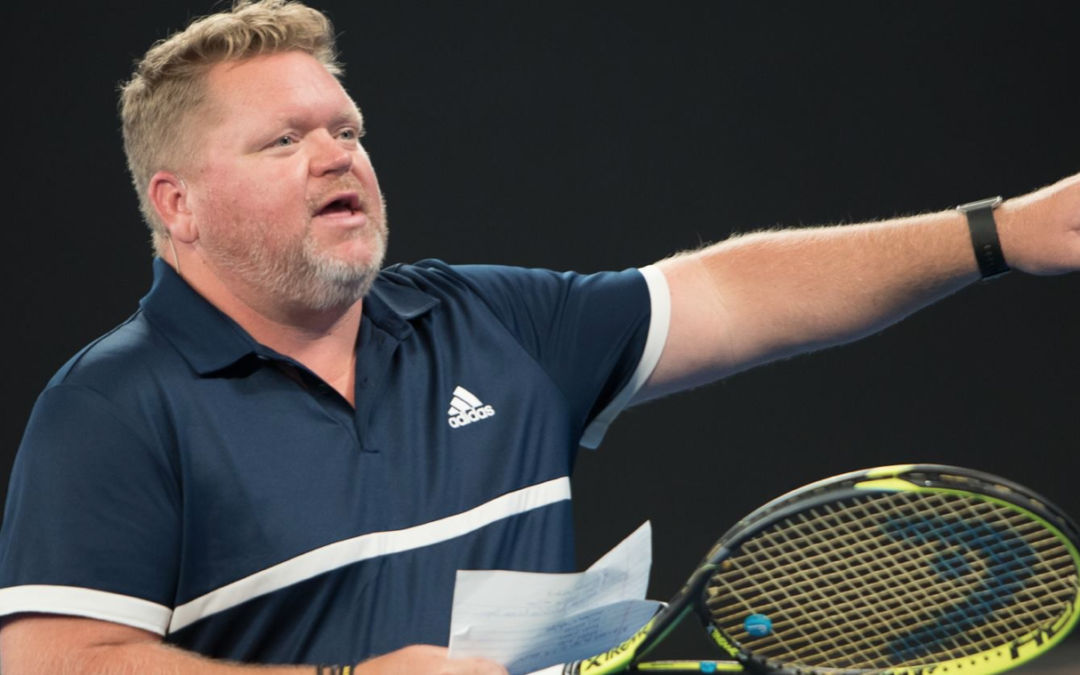Brought to you by TennisPal
You would be hard-pressed to find a professional tennis player who does not execute the volley with exceptional technique and prowess. According to High-Performance Tennis Specialist and head coach of the Martin Methodist University men’s and women’s tennis teams, Bill Riddle, the volley is essential for making a living on the Pro Tour.
If volleying is such a vital component of the game of tennis, then why are players often rarely practicing this skill? In Riddle’s 31 years of coaching experience, he has seen countless players simply stand on the baseline and hit balls back-and-forth, rather than heading to the net to practice their volley.
Based on this experience, Riddle makes a conscious effort to begin each and every practice with volley work. “We always start off up at the net with some volleys and move back through that progression. We always spend some time in the middle of practice as well, and then towards the end, there will be some mixing up of point play where there’s weight added to the volley, whether it be two points or three points,” he explained.
To Riddle, continually emphasizing the importance of volley work throughout practices helps his players prepare for a match, allowing them to feel more comfortable in uncomfortable situations because they are able to rely on what they have done in practice.
Specifically, Riddle takes his athletes of all levels through drill progressions that improve the volley skills of both singles and doubles players. “I take them through a progression of one step back away from the net, and we work our way back to a full step behind the service line, and then we come back forward again. We’ll do probably about four stations, take a giant step back and then take another giant step back. We do that straight up the court as if we’re playing singles and we also go cross court, deuce court to deuce court, and then ad court to ad court for those players that play doubles,” he said.
From the mistakes Riddle has witnessed over the years, he believes most volley problems occur when a singles player attempts to transfer over to doubles. According to Riddle, players must spend time receiving the ball from a variety of directions and sending it back to that same and various direction. In order to effectively play doubles, players should spend time learning to volley from both sides of the court.
Riddle also believes there are three principles for an effective volley for the average club-level tennis player. First, volleying is all about making solid racquet contact out in front of the body. Second, he encourages his players to find a defined characteristic, such as the number on the ball, so that it appears much larger than it is in reality. Lastly, the stroke length must be minimal to none at all. In fact, a sizeable backswing is one of the most common flaws tennis players make when executing the volley.
However, there is an easy fix Riddle uses to improve the backswing of his players. “Players often overdo the volley, the move is so simple that we make it difficult. For those who are struggling with too much backswing or too big of a swing, I either put them up against a wall so that they cannot take the swing back, or I’ll put them right on top of the net and ask them to make contact on my side of the net,” he explained.
There is also a misconception in tennis that players who lack significant strength are unable to effectively volley. However, Riddle believes that this typically stems from two different issues. First, a lack of strength is often due to using the wrong equipment and can be improved with the proper racquet or strings. Additionally, many times the primary problem is that the player is simply not using their body enough. “Even a 50-pound little kid can really tag a volley if they step into it and use their body efficiently and effectively,” Riddle reasoned.
Above all, Riddle stresses the importance of continually practicing the art of the volley. In fact, he believes there is no substitute for simply hitting 50 volleys off of a wall each day because consistent practice truly makes an impact on improving a player’s ability.
“Practice hitting volleys off of the wall because it’s going to consistently come back. It never quits on you, it doesn’t complain, and it is readily available anywhere,” said Riddle. “Trying to find a partner is difficult, but you can find a wall anywhere. That’s the absolute easiest way to improve your volley.”


